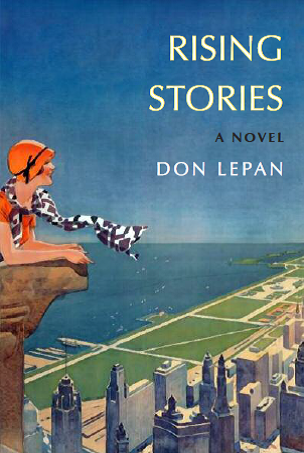Robert Everett-Green argued persuasively recently in The Globe and Mail that, on balance, zoos do not serve a useful role either in conserving endangered species or in educating human animals to become more knowledgeable and more caring about non-human ones (“Why I’m Never Going to the Zoo Again”). There was a lively reaction to his article, with many writing in support, but also many (including several zoo executives) waxing indignant. A key pillar of the pro-zoo argument is of course that zoos help children learn about animals, and learn to care about animals—not just the individual animals in front of them but also members of the same species who they will never see, who may be thousands and thousands of miles away. Conor Wyche of Mississauga, Ontario, expressed this idea concisely and well in his letter to the editor: “It is difficult to connect to, or care about, things you never see” (Globe, April 5). Massimo Bergamini expressed a similar view in his own op-ed piece, ridiculing Everett-Green’s suggestion that these days we can learn more about the natural lives of animals from films than from viewing them in person in captivity. “As if digital interactions can ever replace being able to see, smell, hear and touch an animal,” he sniffed. “What a frightening, alienating and dangerous vision of the natural world.”
Bergamini’s and Wyche’s views sound like simple common sense. But are they right? One conclusive test comes to my mind: petting zoos. These have become extremely common throughout North America and much of Europe as well. There are eleven in the Seattle area, ten in and around Amsterdam. Most are stand-alone operations, but it has also become very common to find a petting zoo (or “Children’s Zoo”) as a special section within a traditional zoo; from Omaha to Edmonton and from Boston to San Diego, mainstream zoos have developed areas where very young children may see farm animals up close.
The cuteness of the animals in petting zoos (lambs and goats and ponies, but also calves and pigs and chickens and turkeys—many petting zoos include most varieties of “food animal”) tugs on the heartstrings in much the same way as does the cuteness of the baby gorilla or the baby giraffe. Allison Holm’s gush on the Seattle Parent Map site puts it very plainly indeed: “It’s not spring without baby animals, so grab your kiddos (and camera) and get ready to oohh and ahhh over furry and feathered new additions [to the zoos and petting zoos in the Seattle area].”
But do all the fuzzy feelings engendered by these” furry and feathered” friends carry over into the wider world? One would like to think they do, but the evidence points in the other direction; it’s hard not to conclude that, however unintentionally, petting zoos and children’s zoos where farm animals are on display end up doing more to foster cruelty than to prevent it.
Children’s zoos and petting zoos began to become popular in the 1950s and 1960s. The first children’s zoos seem to have come into existence around 1950; according to the OED, the first recorded use of the term “petting zoo” in print is in a 1965 article in the Fond du Lac (Wisconsin) Commonwealth Reporter. In Canada, the Experimental Farm in Ottawa seems to have been something of a pioneer in trying to build awareness of farm animals among city children. The British magazine Country Life ran a feature on the farm in 1965, saying that although the primary purpose of the farm was agricultural research, the general public was “welcome to come and see what [was] being done.” I remember myself as a very small child growing up in Ottawa in the 1950s, visiting the animals at the Experimental Farm, and loving the experience—just as children throughout the Western world have come to enjoy the experience of visiting children’s zoos and petting zoos over the past half century. And I would love to think that such experiences help children to develop a humane attitude towards their fellow creatures—not just the cute baby ones that they are allowed to pet but also the ones far away.
But is that the case? Why should we expect that oohing and aahing over little calves or little chicks in front of us should have any real effect on our attitudes towards the calves and chicks we can’t see? How much effect does oohng and aahing over the human babies we see here on Canada have on our attitudes towards the babies in South Sudan or the Central African Republic who may need our help, but usually don’t find help forthcoming?
It is striking that the era of the petting zoo has coincided almost precisely with era of tremendous growth in intensive animal production; the factory farming of “food animals” really took off in North America in the 1950s and 1960s. Even as our society has encouraged its children to express affection for the small number of farm animals who are displayed in petting zoos, it has been complicit in the growth of a system that treats with horrific cruelty the billions and billions of farm animals which the children don’t see. A cynic might suggest that at some level the two go together—that foregrounding small scale but highly visible settings in which kindness towards farm animals is encouraged acts as a useful distraction from the high volume cruelty that has for the most part been hidden away.
I would not go so far as to suggest an intentional link between the two. But whatever the motive, whatever the rationale, the spread of children’s zoos and petting zoos has done little or nothing to deter people from eating the products of cruelty. For all the publicity about free range alternatives to what is now described as “conventional” farming, the products of these more humane alternatives represent well under 5% of the market in North America; almost everyone decides to save money and buy animal products that could never claim to be “cruelty-free.” Families ooh and aah at the cute animals at the petting zoo or the children’s zoo, and then go off to eat the same animals at a nearby McDonalds, where the drive to keep prices low for those families has meant that the levels of cruelty the non-human animals experience (not just at the slaughterhouse but throughout their short lives on the “farm”) has steadily been ratcheted up.
One cannot expect the four-year old petting the little calves and piglets to make the connection—and one would not want to tell a four-year old the facts as to how the calves and piglets who aren’t lucky enough to spend their lives in petting zoos are treated. But what about once children do become old enough to learn something of the truth (the gestation crates for pigs that restrict mothers so fully they cannot turn around; the laying hens crammed five or six to a tiny cage for their entire lives; and on, and on). Do they connect the bond they have felt with the animals they can touch in a petting zoo with the animals far away? Sad to say, there appears to be no connection made.
And what of the adults? If anything, having the opportunity to perform expressions of affection towards calves and turkeys and piglets—and giving their children the same opportunity—may act as a salve to adult consciences. Almost every adult who eats factory-farmed animal products in North America is at some level aware that the animals from which those products come are often treated cruelly; almost every adult wants the prices of these products kept low; but almost every adult also likes to think of him- or herself as someone who loves animals. How can those attitudes be reconciled? At some level, of course, they can’t. But if adults are able to take their children to petting zoos and children’s zoos—and if they themselves smile at the resulting happy interactions between human and non-human animals—it can only help to demonstrate that they are indeed animal lovers. If there’s cruelty happening in the production of what they eat, they surely can’t be in any way held responsible. Can they?
Petting zoos and children’s zoos, to put it bluntly, facilitate a denial of complicity in cruelty.
What, then, of the argument that “it is difficult to connect to, or care about, things you never see,” that ”digital interactions” could never “replace being able to see, smell, hear, and touch an animal”? Much as that argument may seem plain common sense, the fact is, of course, that industry won’t allow us to see in person how the overwhelming majority of farm animals are treated. It has often been suggested that if the barn walls behind which the cruelty happens were made of glass, factory farming would quickly become more humane. No doubt—but the reality is that such transparency will never happen. The only way in which we can see how those animals live their lives is by paying attention to photos and films that brave undercover workers have taken inside those facilities—in short, through “digital interactions.” The sad fact is that going to a petting zoo is unlikely to lead anyone to become more humane in their food choices. Watching a Mercy for Animals video showing what actually happens behind the closed doors of a factory farm, on the other hand, can inspire true compassion, and real change.
Tuesday, April 15, 2014
Subscribe to:
Posts (Atom)




